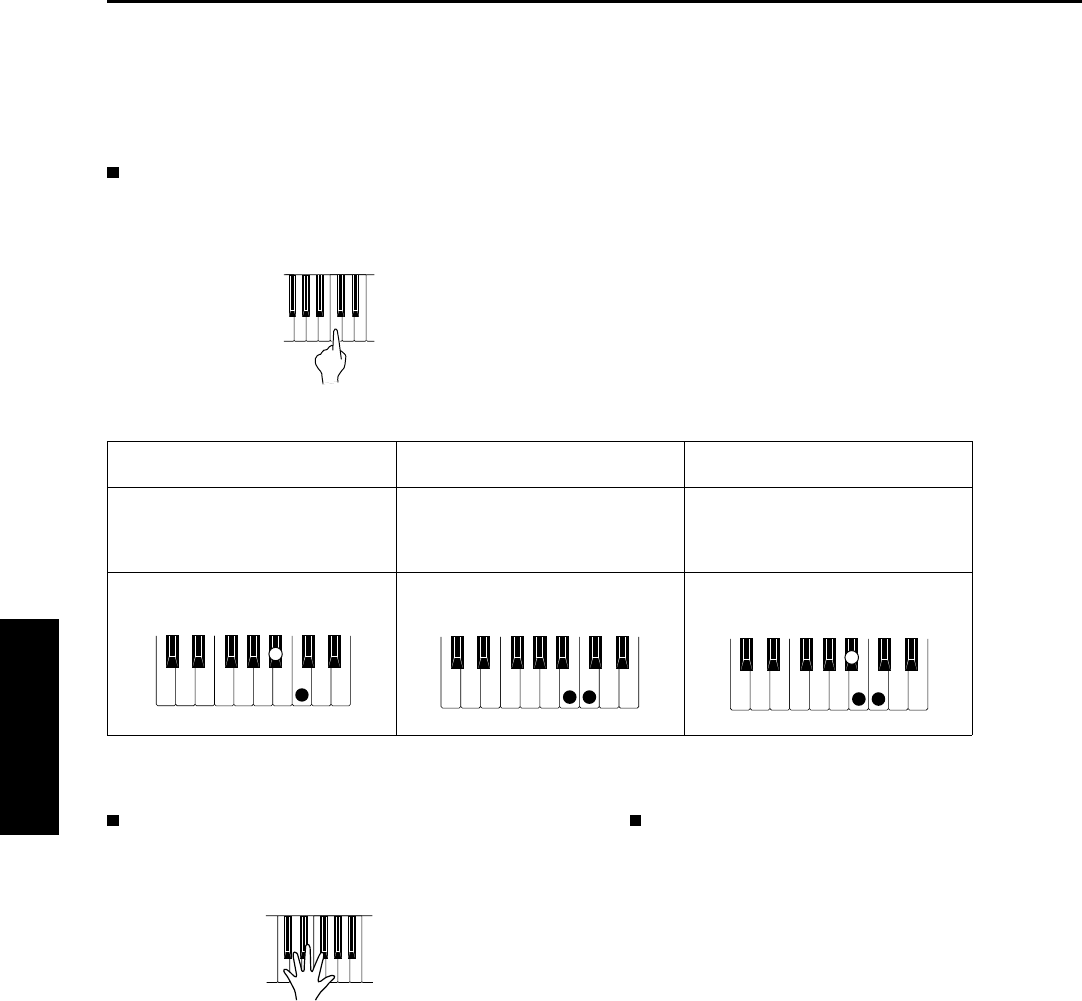
Playing chords
Choose from three ways of playing chords.
BASIC mode
In the BASIC mode, a major chord can be played
just by pressing the key for its root note.
Minor, seventh and minor seventh chords are also easily produced.
• When three or more keys of a chord are pressed, it is recognized as a <fingered> chord.
FINGERED mode
In the FINGERED mode, you specify the chord
by playing all the notes in the chord.
• Play at least three notes to specify the chord.
• If the CHORD FINDER procedure is used, you
can see the types of chords that can be
specified and the keys you press to play them.
(Refer to page 57.)
PIANIST mode
In the PIANIST mode, the entire keyboard can
be used to specify chords (FINGERED mode) for
the automatic accompaniment; a RIGHT part is
assigned to all the keys, and the keyboard does
not split.
• If the CHORD FINDER procedure is used, you
can see the types of chords that can be
specified and the keys you press to play them.
(Refer to page 57.)
• When specifying chords, if you press a key a
perfect 5th or more below the lowest note of
the chord, the BASS part becomes a pattern
based on that note.
<APC HOLD>
If this function is assigned to the Foot Switch
(sold separately), then during a performance in
the PIANIST mode, for example, pressing the
Foot Switch will play the currently specified chord
in that timing, allowing you to focus your perform-
ance on a solo melody.
• The accompaniment continues in the same
chord as long as the Foot Switch is depressed,
and it does not change even if other chords
are played.
• To change the Foot Switch assignment, refer
to page 179.
Example: C chord
minor chord seventh chord minor seventh chord
Play the root note plus a
black key to the left of it.
Play the root note plus a
white key to the left of it.
Play the root note plus a
black key and a white key
to the left of it.
Example: Cm Example: C7 Example: Cm7
Playing the rhythm
Part II Playing the rhythm
54
QQTG0671


















